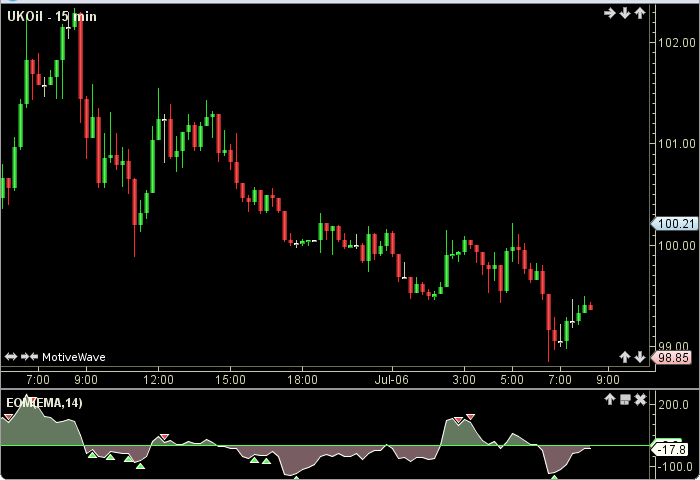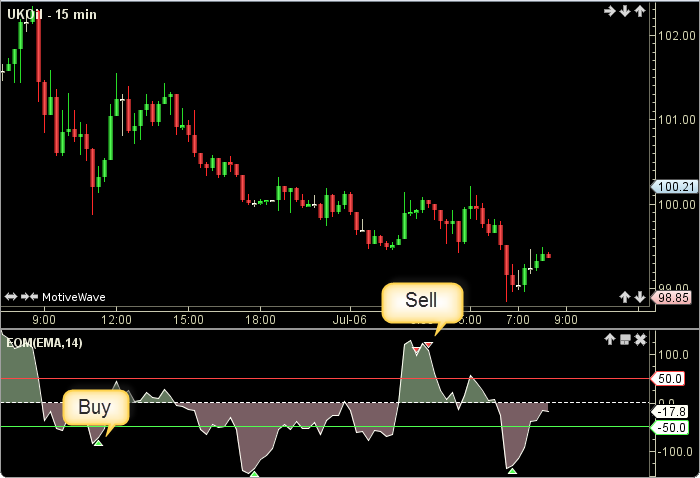Ease Of Movement
The Ease Of Movement Indicator, developed by Richard W Arms, uses highs, lows and volume in its calculation. Adjustable guides are given to fine tune the trading signals. The user may change the method (EMA), period length and guide values. This indicator’s definition is further expressed in the condensed code given in the calculation below.

How To Trade Using Ease Of Movement
Adjust the top and bottom guides to control the quantity and quality of the traning signals. If the EM has peaked above the top guide a sell signal will be generated. Conversely, if the EM has troughed below the bottom guide a buy signal will be given. The 0 line divides the bulls (above) from the bears (below).

How To Access in MotiveWave
Go to the top menu, choose Study>Volume Based>Ease Of Movement
or go to the top menu, choose Add Study, start typing in this study name until you see it appear in the list, click on the study name, click OK.
Important Disclaimer: The information provided on this page is strictly for informational purposes and is not to be construed as advice or solicitation to buy or sell any security. Please see our Risk Disclosure and Performance Disclaimer Statement.
Calculation
//method = moving average (user defined, default is EMA)
//index = current bar number
//prevP = previousPrice
//MT = more than
//LT = less than
//ma = moving average
prevP = price[index-1]; vol = getVolume(index)volume /1000000; // volume in millions prevHigh = High[index-1]); prevLow = Low[index-1]; midPoint = (high + low) / 2; prevMid = (prevHigh + prevLow) / 2; midPointMove = midPoint - prevMid; boxRatio = vol / (high - low); roughEm = midPointMove / boxRatio; Plot: EM = ma(method, index, period, roughEm); //Signals prevEm = EM[index-1]; sell = (em MT topGuide) AND (prevEm MT em); buy = (em LT bottomGuide AND prevEm LT em);
